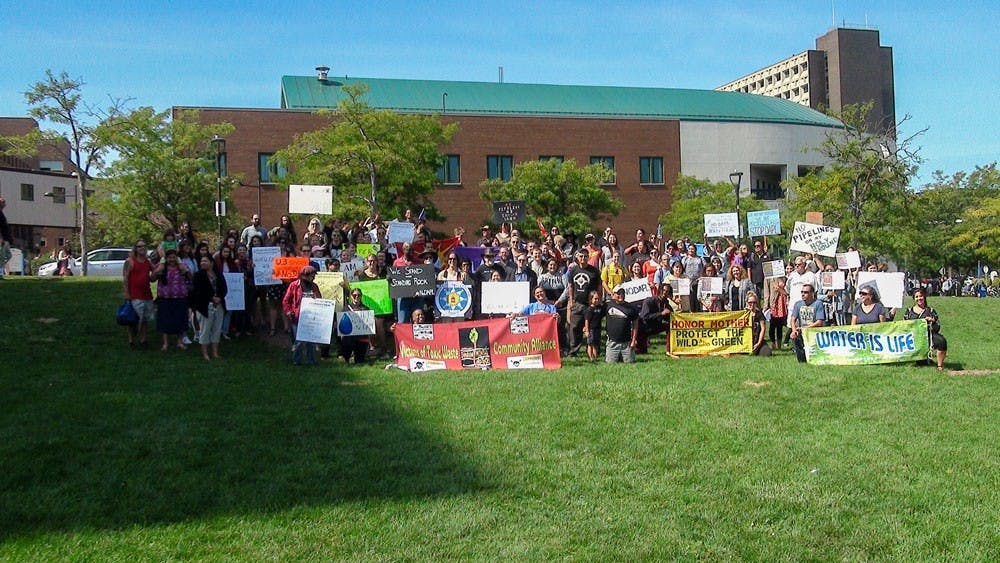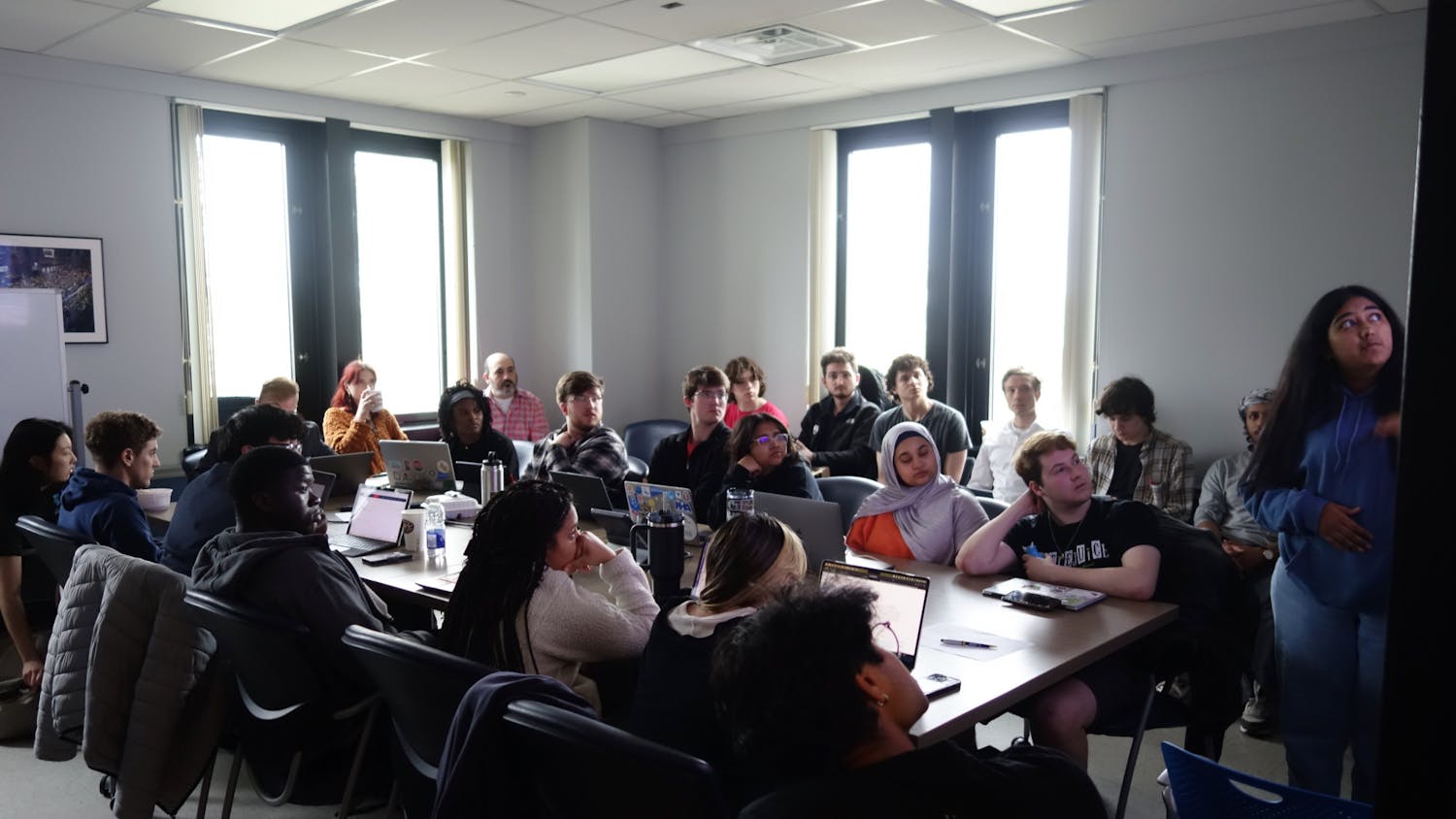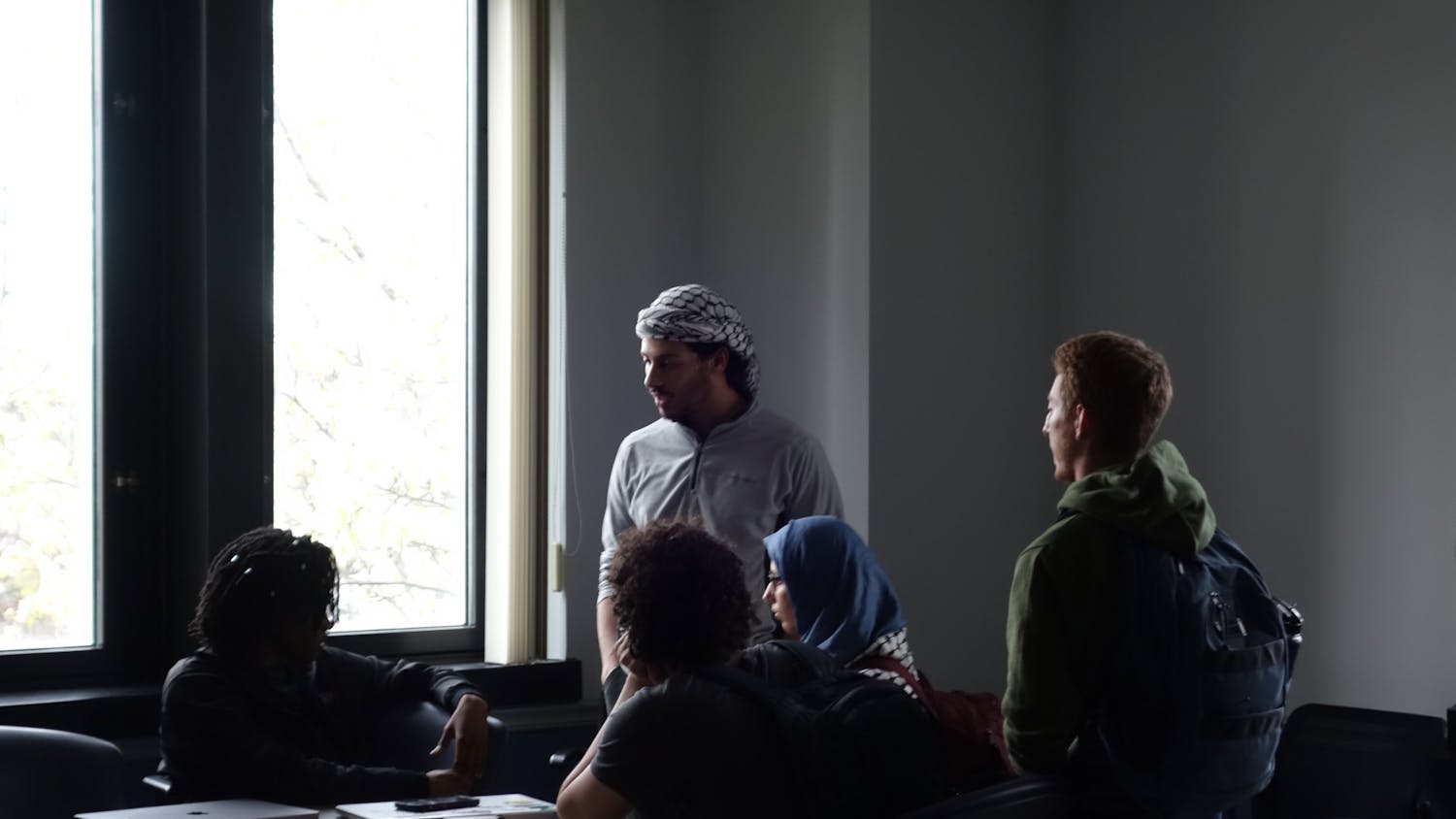UB students and faculty stood outside of the Student Union holding signs saying “Water is life” and “No pipeline on my Holy Grounds.” They danced the Round Dance and said prayers to their Creator. They burned Indian tobacco and reminded each other that water and the Earth are “more important than money.”
Onlookers of all race, gender and age paused while on their way to class to listen to the message.
Native American protestors gathered in the Student Union field on Friday afternoon to support the Standing Rock Sioux Tribe’s protest of the North Dakota Access Pipeline (DAPL) project. UB’s Haudenosaunee-Native American Research Group and the Native Graduate Students Association organized the gathering.
The Dakota Access Pipeline (DAPL) is a $3.8 billion 1,170-mile pipeline, which is expected to carry 500,000 barrels of fracked oil from the Bakken oilfields of North Dakota to Illinois, according to Democracy Now.
The pipeline will lessen U.S. dependence on foreign energy, according to the Energy Transfer website.
Native speakers at the protest talked about objections to DAPL, from environmental destruction to its “spiritual and cultural damage.” The pipeline, if completed, will be “another addition to the historical and contemporaneous traumas of the U.S. indigenous population,” one speaker said.
Many people, including environmentalist and indigenous groups, say developers must find another solution. Margaret Moss, an associate professor in nursing, gave a detailed history of the problem.
The pipeline travels under the Missouri River, which provides water to the Standing Rock Sioux Reservation and is also a major tributary to the Mississippi River, a water source for over 10 million people, according to Moss.
The Sioux are not the first to object to dangers of a possible leak or spill.
Moss said the original route for the pipeline was to be north of Bismarck, the state’s capital, but people responded with “NIMBY” or “Not in my back yard” in objection.
The route was changed to just north of the Standing Rock Sioux Tribe.
On top of environmental concerns, the Sioux resist the DAPL construction because it has, and would destroy sacred sites, burial grounds and other lands, which they said are “protected by federal law,” according to the Smithsonian website.
Protestors formed Camp of the Sacred Stones in April 2016 in the area near the Missouri and Cannonball Rivers. The then-small camp, is now an encampment of over 1,000 people and has recently become a literal battleground between developers and protestors.
Over Labor Day weekend, developers began to bulldoze, despite a pending injunction filed by the Sioux for a delay of construction.
Protestors, including women and children, climbed the wire fence separating them and the construction workers. Developers hired security that maced protestors and several people were bit by security dogs, according to Democracy Now.
The Obama administration issued a temporary halt on construction until further environmental assessments, according to CNN.
Stephen Demchak is a Navajo and Lakota PhD candidate in American Studies, who attended Friday’s rally to show his support for the protestors.
Demchak said the North Dakota governor and the sheriff’s department is “just making the rules up as they go along.”
“Rights have been violated,” Demchak said.
North Dakota national guard was called in to set up concrete roadblocks to the site, while the governor of North Dakota has allegedly shut down cell towers surrounding the camp so that protestors cannot post live footage, according to Demchak.
Samantha Ray, a freshman biomedical sciences major, said she came to the rally because she wanted to show support for her people.
“Even though we are different tribes and we do have different cultures, we are all indigenous and we are all one people,” Ray said. “So we stand by each other in times of need; and if this contamination kills people or poisons people then it’s basically my family that’s dying.”
Sarah Crowley is the assistant news editor and can be reached at sarah.crowley@ubspectrum.com.





